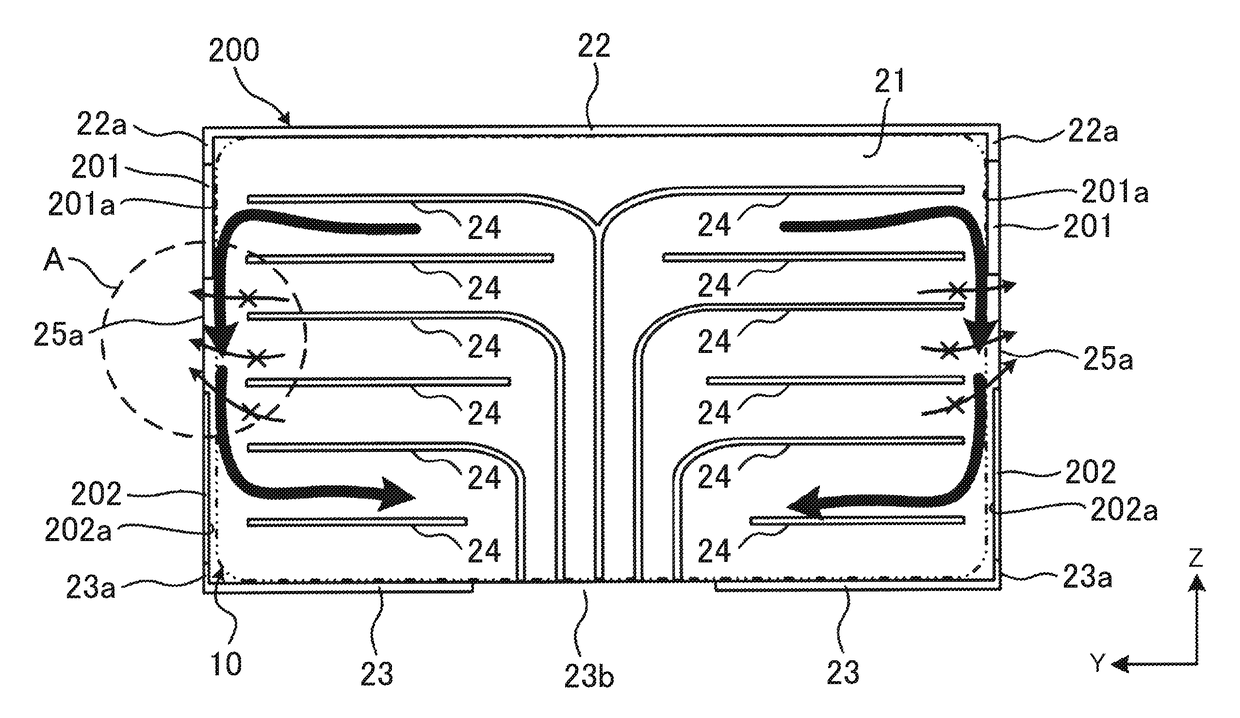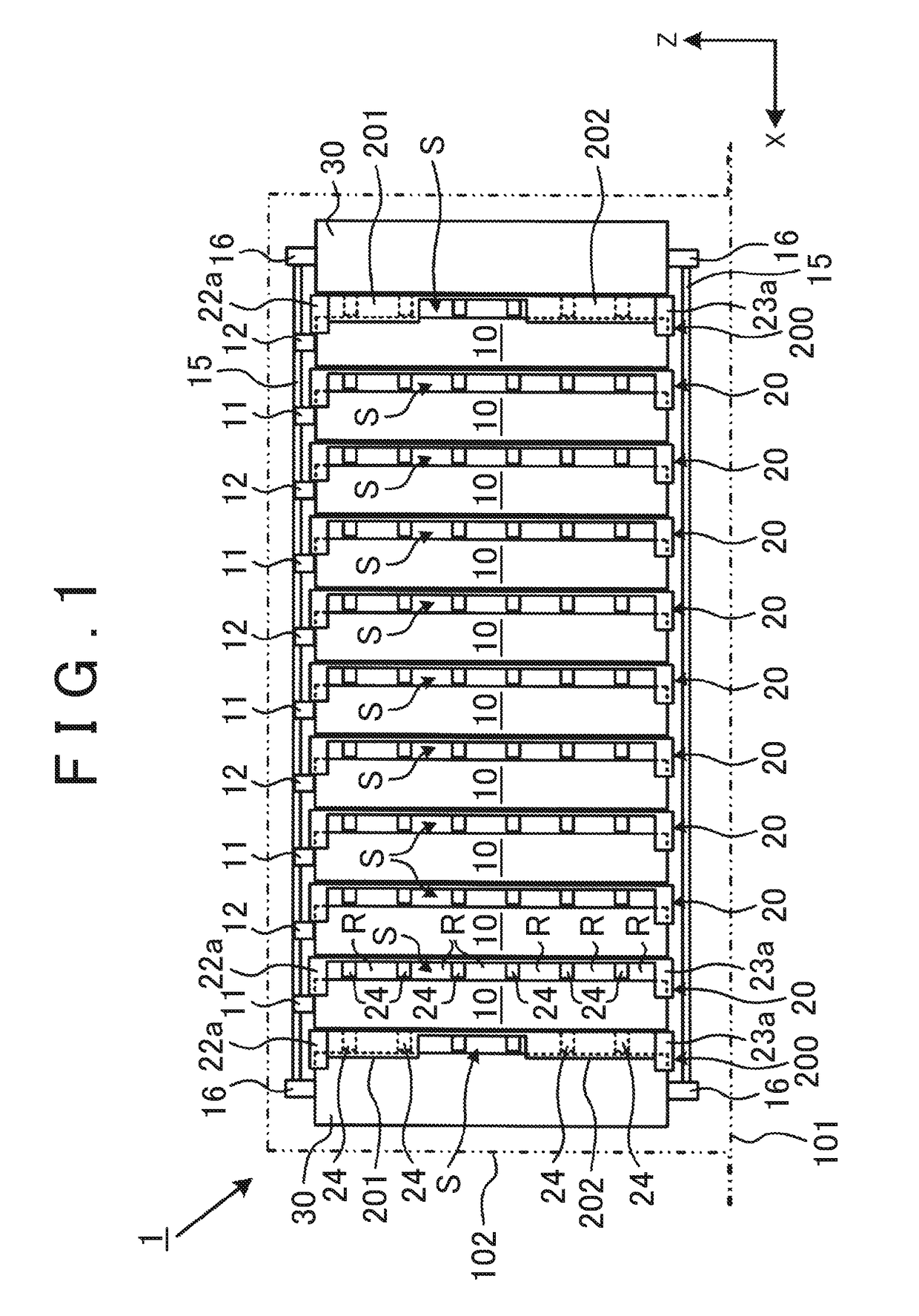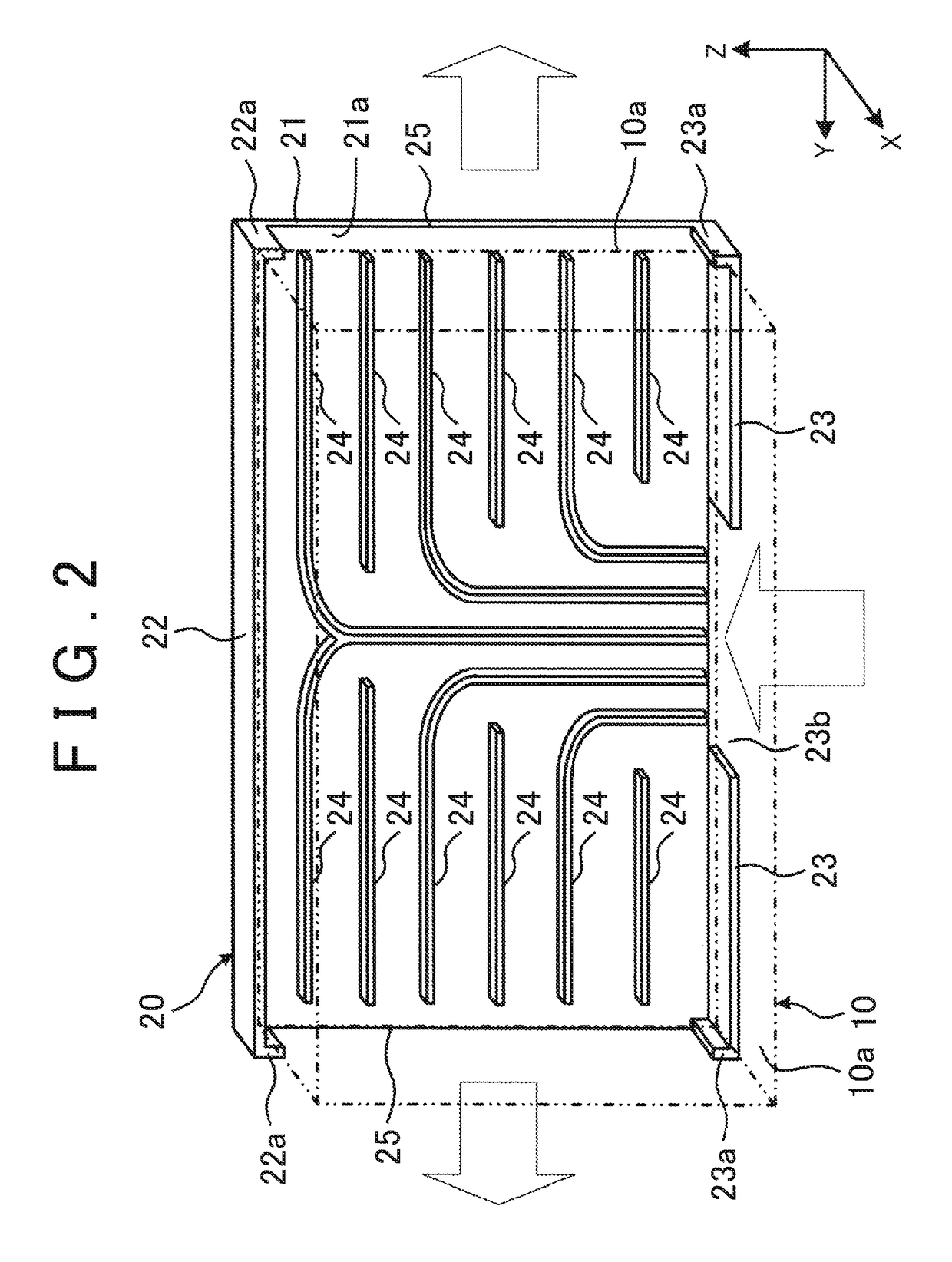Power storage apparatus
a technology of power storage and power storage devices, which is applied in the direction of batteries, cell components, current conducting connections, etc., can solve the problems of difficult to sufficiently exert the battery performance of the entire assembled battery, difficult for the air to stay in the cooling space, etc., and achieve the effect of reducing temperature variation
- Summary
- Abstract
- Description
- Claims
- Application Information
AI Technical Summary
Benefits of technology
Problems solved by technology
Method used
Image
Examples
Embodiment Construction
[0028]An embodiment of the present invention will be described hereinafter.
[0029]FIG. 1 to FIG. 5 are drawings showing Embodiment 1. FIG. 1 is a side view of an assembled battery 1 including a thermal regulating structure of the present embodiment. In FIG. 1 and other drawings, an X axis, a Y axis, and a Z axis orthogonally intersect one another. The relation of the X axis, the Y axis, and the Z axis is the same as that in the other drawings. In the present embodiment, an axis corresponding to a vertical direction is defined as the Z axis.
[0030]The assembled battery 1 of the present embodiment (an example of a power storage apparatus) is mounted to a vehicle as a power supply apparatus for supplying electric power to a drive motor. The vehicle herein may be a hybrid vehicle, an electric vehicle, or the like. A hybrid vehicle is equipped with another power source, such as a fuel cell and an internal combustion engine, as well as the assembled battery 1 as a power source to drive the ...
PUM
| Property | Measurement | Unit |
|---|---|---|
| circumference | aaaaa | aaaaa |
| structure | aaaaa | aaaaa |
| thermal radiation | aaaaa | aaaaa |
Abstract
Description
Claims
Application Information
 Login to View More
Login to View More - R&D
- Intellectual Property
- Life Sciences
- Materials
- Tech Scout
- Unparalleled Data Quality
- Higher Quality Content
- 60% Fewer Hallucinations
Browse by: Latest US Patents, China's latest patents, Technical Efficacy Thesaurus, Application Domain, Technology Topic, Popular Technical Reports.
© 2025 PatSnap. All rights reserved.Legal|Privacy policy|Modern Slavery Act Transparency Statement|Sitemap|About US| Contact US: help@patsnap.com



